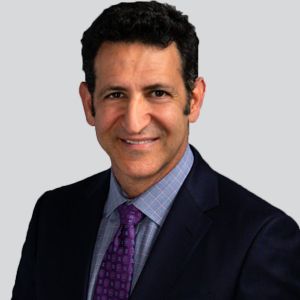Article
The Key Role of Biomarkers in Alzheimer Disease Research
Author(s):
In part 2 of this interview, Marwan Sabbagh, MD, provides insight on what he feels is the most promising field of research in Alzheimer disease right now.

Marwan Sabbagh, MD
This is the second of a 2-part interview. For part 1, click here.
This year’s virtual Alzheimer's Association International Conference (AAIC) was filled with notable presentations and findings. Among the top research presented was the use of biomarkers including p-tau217, p-tau181, and neurofilament light chain (NfL) in the diagnosis and evaluation of Alzheimer disease (AD).
The expanded research into biomarkers reflects the movement towards understanding more about the pathology of AD and ways to predict risk. Marwan Sabbagh, MD, director of the Lou Ruvo Center for Brain Health at Cleveland Clinic, feels strongly about the potential that biomarkers, especially those accessible in plasma, hold for the future of how we prevent, diagnose, and treat AD.
In part 2 of this interview with NeurologyLive, Sabbagh discusses what he considers to be the hottest topics in the field right now and why the greater community should be paying close attention to what's happening in the specialty.
NeurologyLive: What research stood out to you that was presented at this year’s AAIC meeting?
Marwan Sabbagh, MD: The biomarker research is definitely hot, and everyone would agree with that. We’re now seeing the real probability of plasma biomarkers being deployed in clinical applications within the year. Look at the fact that some doctors don’t feel comfortable making these diagnoses. Every company is worried about developing these large and expensive monoclonal antibodies for physicians who can’t diagnose these conditions correctly. The reason I say that is, if you had a blood-based biomarker that was like a prostate-specific antigen (PSA) for prostate cancer or hemoglobin A1c, doctors would at least say, “this is an abnormal value, maybe we need to explore further.” Especially if they have an abnormal value and their Mini Mental State Examination (MMSE) score is 10. My point is, is that I see plasma biomarkers moving into the clinical applications fairly quickly because it will improve comfort level. What’s exciting about the p-Tau217, p-Tau181, and neurofilament light (NfL) data is it correlates well to autopsy data and very well to imaging data. That helps boost your confidence that you’re actually measuring target pathology. The question is when you have a lab value, are you actually measuring anything in the brain? These 2 findings really boost confidence.
Which of the following topics do you feel are most pressing in the Alzheimer community right now: treatment or prevention, and why? Where do you hope to see these tracks go in the near future?
I believe the diagnosis of AD, going from a diagnosis of exclusion to a diagnosis of inclusion, going from a diagnostic accuracy of 66% to 70%, to better than 90% demonstrates that we’ve hit that precipice. We’re really going to see an invasion of biomarker confirmation. If you know you have a monoclonal antibody and you’re trying to prove they have amyloid in their brain, that’s the label that is going to say that. How are you going to prove it? With cerebrospinal fluid (CSF) or positron emission tomography (PET)? Even then, PET is still not going to be paid for by CMS. That’s a $5,000 test. Most patients are not going to cover it. Plasma biomarkers and CSF become very relevant to that conversation. I know people get nervous about it, but CSF is still quick and cheap. You’re going to see a transformation from diagnosis of exclusion to diagnosis of inclusion, with the monoclonals driving that. That’s number 1. Secondly, we’re going to see the transformation that nihilism is no longer prevalent, and that this is a treatable disease that can have meaningful outcomes and meaningful impact. I love prevention. Prevention is sexy, it’s cool, but it’s far. Much further away than most people think. The things were discussing including immediacy of the biomarker inclusion, transformation of diagnosis, transformation of AD to a chronic disease are all imminent, but the prevention strategies are down the road.
Is there anything you’d like to add about the future of Alzheimer disease research in general?
If you go inside the walls of AAIC, the field itself is very energized. That’s the nature of this whole interview you can see as an observer. Me and my colleagues are all excited again. We went through a low of trudging along, and now we’re back to that new level of excitement. This is a very important watershed moment in our field. I don’t know that the rest of the community of neurologists, psychiatrists, geriatricians have jumped on the bus just yet. I don’t know if they’re even aware that these changes are going on, but I anticipate it trickling down inside the community. The main thing is that we need to get the rest of the world excited too.
Transcript edited for clarity.





